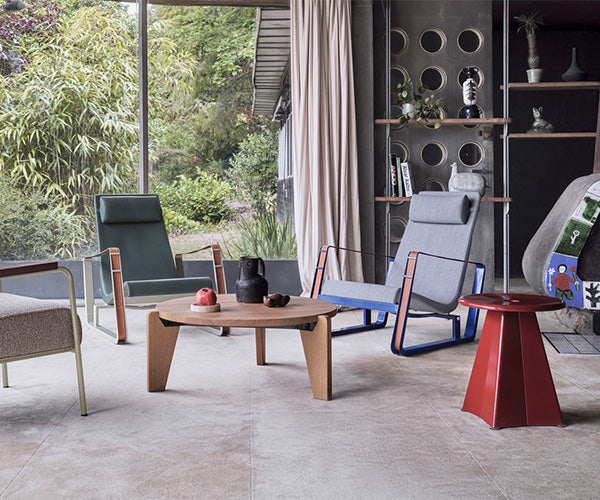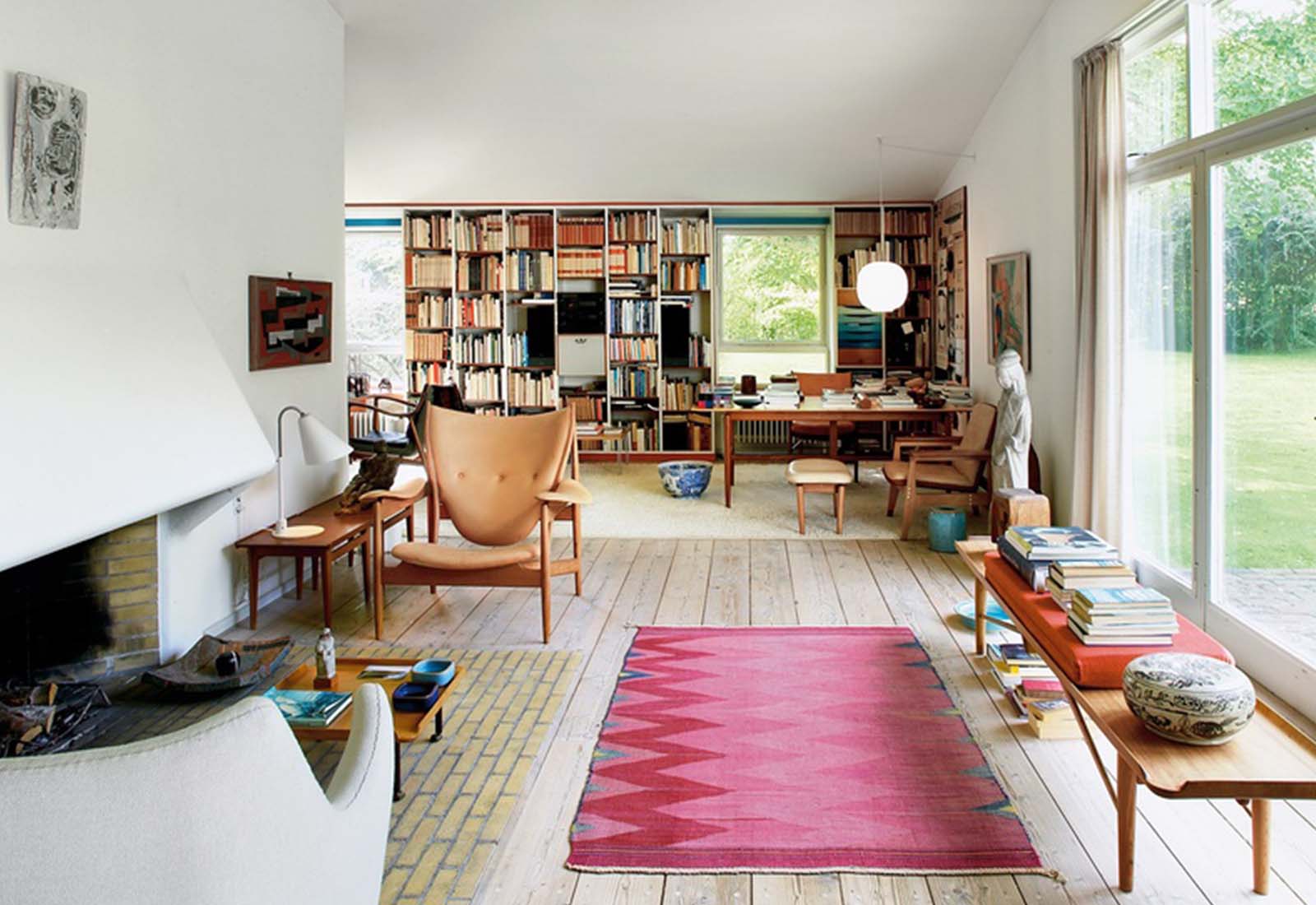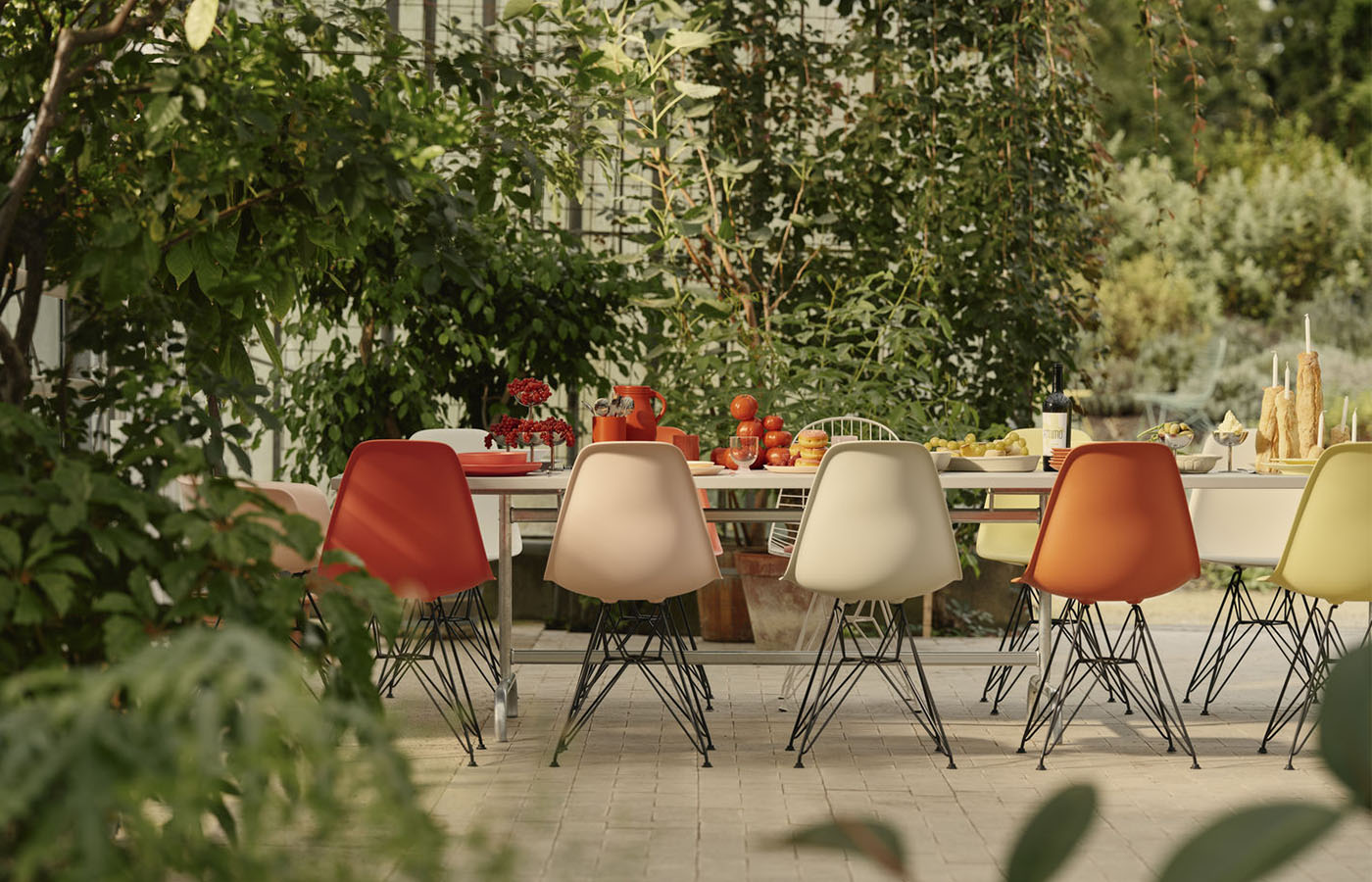Over the coming months we’re going to take a trip around the homes of some of our favourite designers. As with all art, their messages seem more powerful inside their most personal spaces.
To kick off with, we visited the House of Finn Juhl this summer. Here’s the full story for you, we hope you enjoy it!

about finn juhl
The 1940s and 50s were the heyday of Danish design, and have left a legacy that is utterly relevant to anyone interested in art and design today. One of Denmark’s most successful international designers and architects, Finn Juhl was known for his bold, sculptural forms and detailing.
He studied at the Department of Architecture at the Royal Academy of Arts in Copenhagen during the time when the modernist design movement was in full swing.
Like a sculptor, he wanted to design furniture with movement and life. He worked on many prestigious architecture projects - including Danish Broadcasting House and Copenhagen Airport - but soon moved into furniture design, proclaiming he was 100% self-taught in this diversion from architecture.
“Art has always been my main source of inspiration. I am fascinated by shapes which defy gravity and create visual lightness.”
- Finn Juhl

the house of finn juhl in ordrup
“When I build a house, I don’t like others to come and spoil it.” - Finn Juhl
During WWII and the German occupation in Denmark, Finn Juhl designed, built and decorated his own home at 15 Kratvaeger on the Northern edge of Copenhagen.
It was a lifelong labour of love, that he kept adding to and evolving over the years.
Finn Juhl wanted his house to be a “mixture of summerhouse and a bit of legitimate elegance.”
The house is comprised of two plain white one storey buildings with low pitched roofs, joined by a connecting hallway with its own entryway. The house is distictly modern, an early example of a house with an open floor plan. Finn Juhl wanted to create a harmonious home with every detail considered, the architectural structure, the interior and its colours and materials.
The layout has several individual yet connected areas each with distinctive atmospheres. Art and furniture define these spaces with natural light falling in each room and a view to the garden.
Matt, Harry and I went to see his house, in Kratvænget in the summer. We loved the simplicity of the building set amongst beautiful woodland, when we stepped inside the house the rooms feel so connected to each other and to the outside space. The colours + materials, the furniture, paintings and ceramics were a visual treat! The artworks in every room were sublime, the paintings were by the best Danish and international artists from the time of Finn Juhl. One feature that we want to replicate in our home was the coloured painted ceilings in some of the spaces, it really helped to create atmosphere and define the space.




the icons
Finn Juhl’s house is filled with his own furniture designs. The Chieftain Armchair is a true icon of Danish design, and to see it placed in the middle of a light-filled room so it can be viewed from all angles felt very special.
The Poet Sofa was on display at the Cabinetmakers’ Guild Exhibition in 1941, next to two sculptures. With the approach of an artist, Finn Juhl designs the sofa's organic shape and managed to forge the relation between furniture and sculpture.
The sofa does not earn its famous nickname until 10 years later in 1951, when it appears in a popular Danish comic strip named ”Poeten og Lillemor” (The poet and his wife) by Jørgen Mogensen. In the comic strip, a young poet lies on the sofa, contemplating the peculiarities of life.


reading and armchairs
In the Autumn of 1945, Finn Juhl presented the now iconic 45 Chair at the annual Cabinetmakers’ Guild Exhibition. Today, the 45 Chair is widely regarded as one of the most revolutionising and forward thinking pieces within Danish furniture design.
His equally beautiful Reading Chairwas first designed by Finn Juhl in 1953 for the company Bovirke, intended to act as both a dining and reading chair and to be comfortable whether you chose to sit facing the front or the back.










Leave a comment (all fields required)